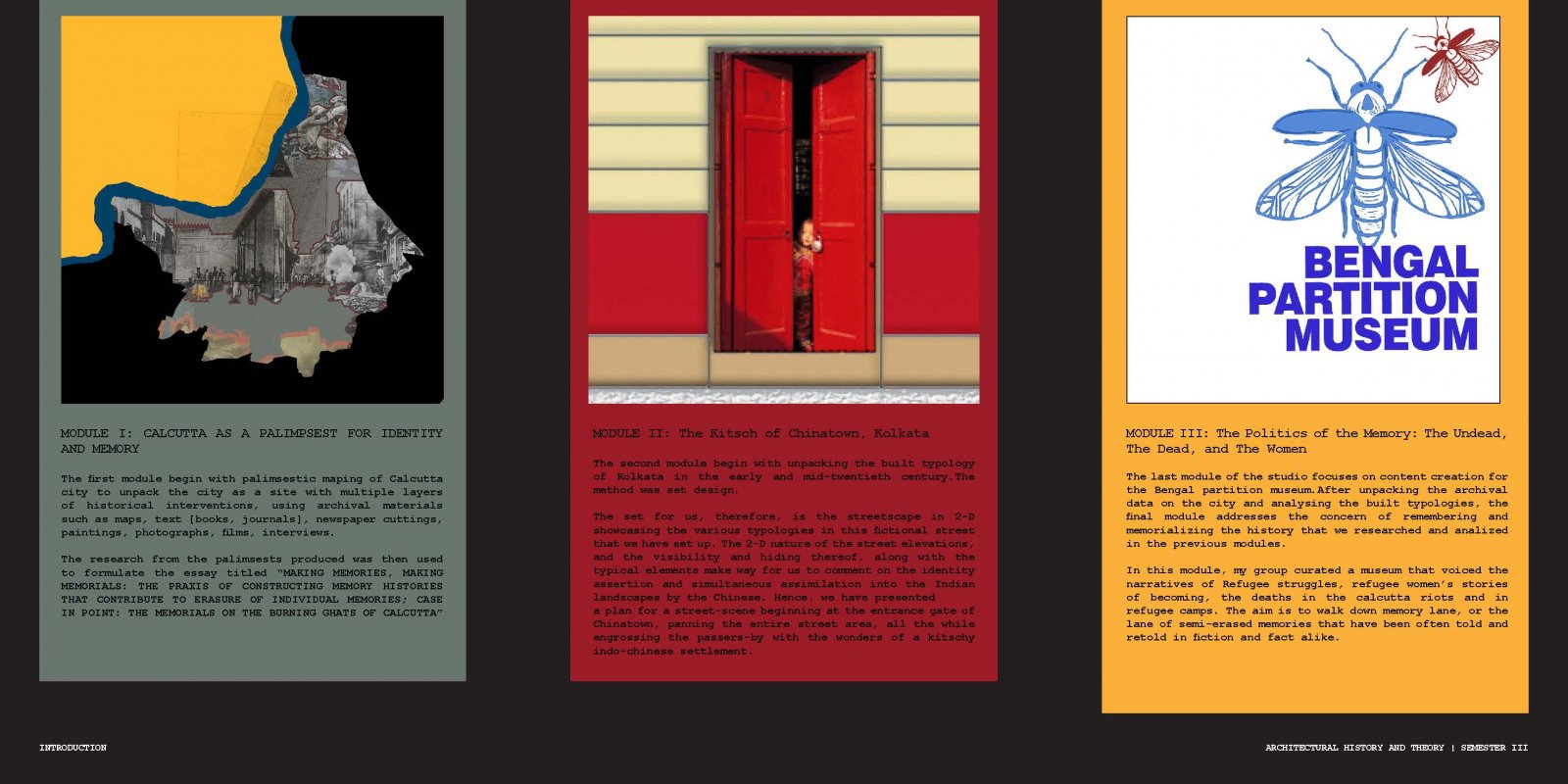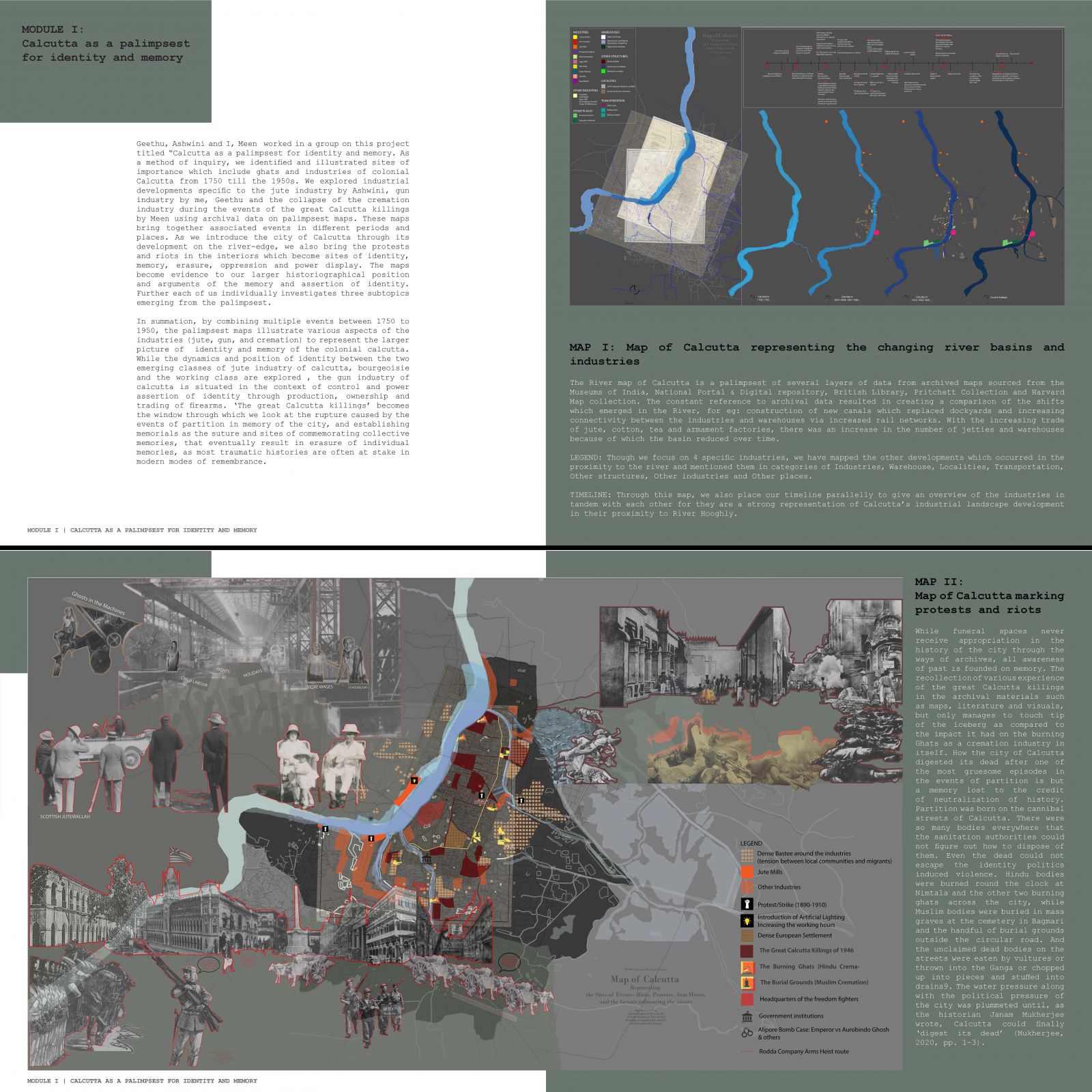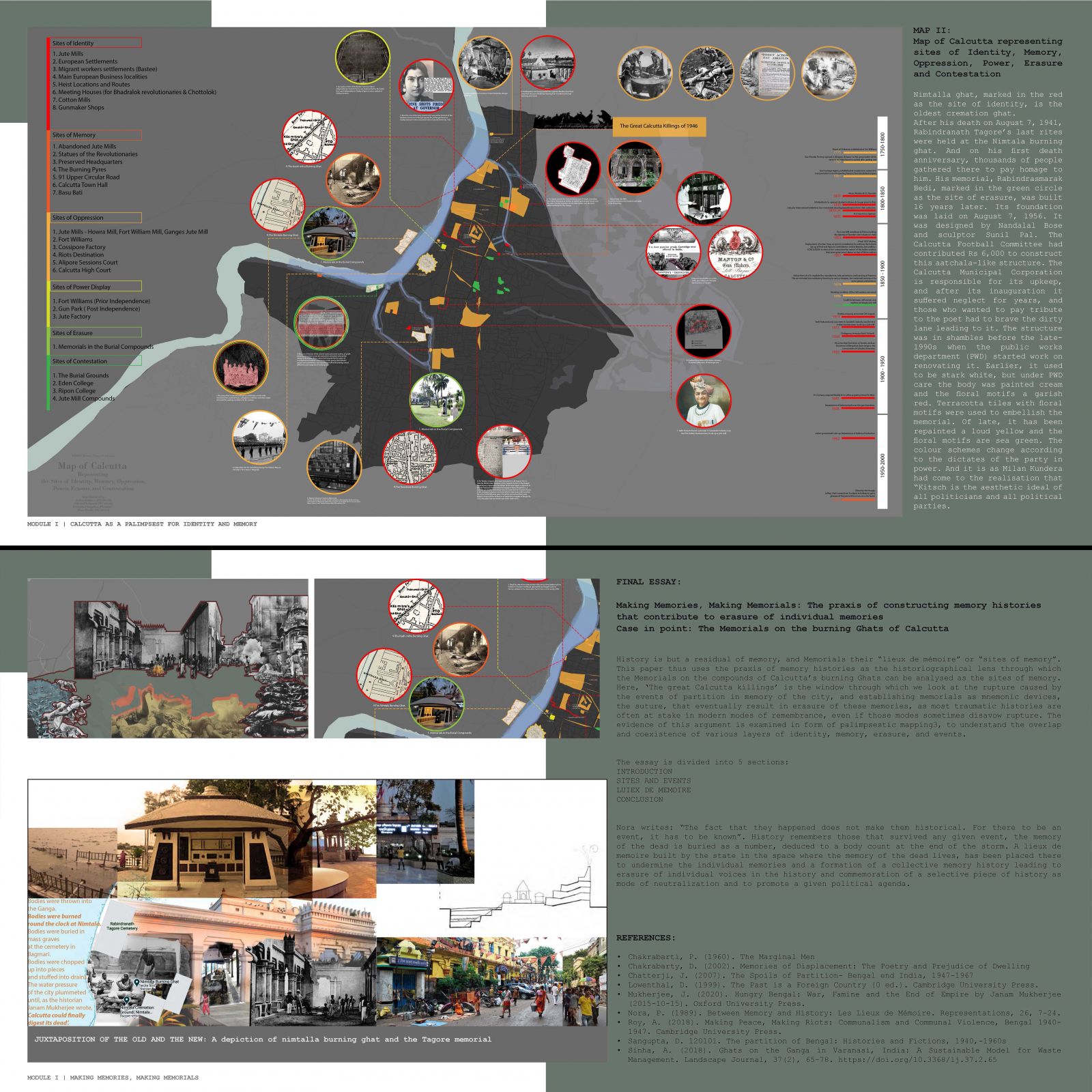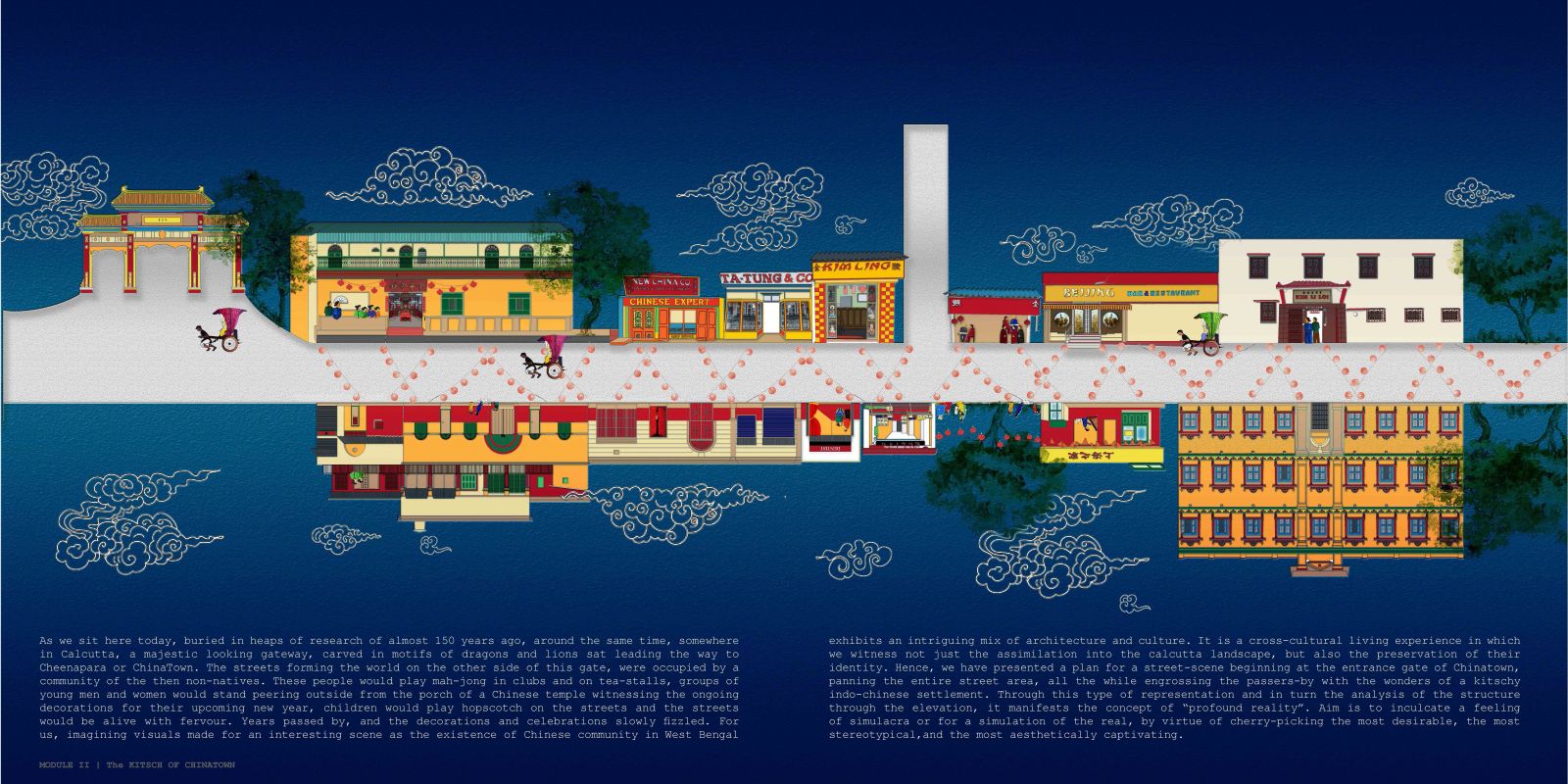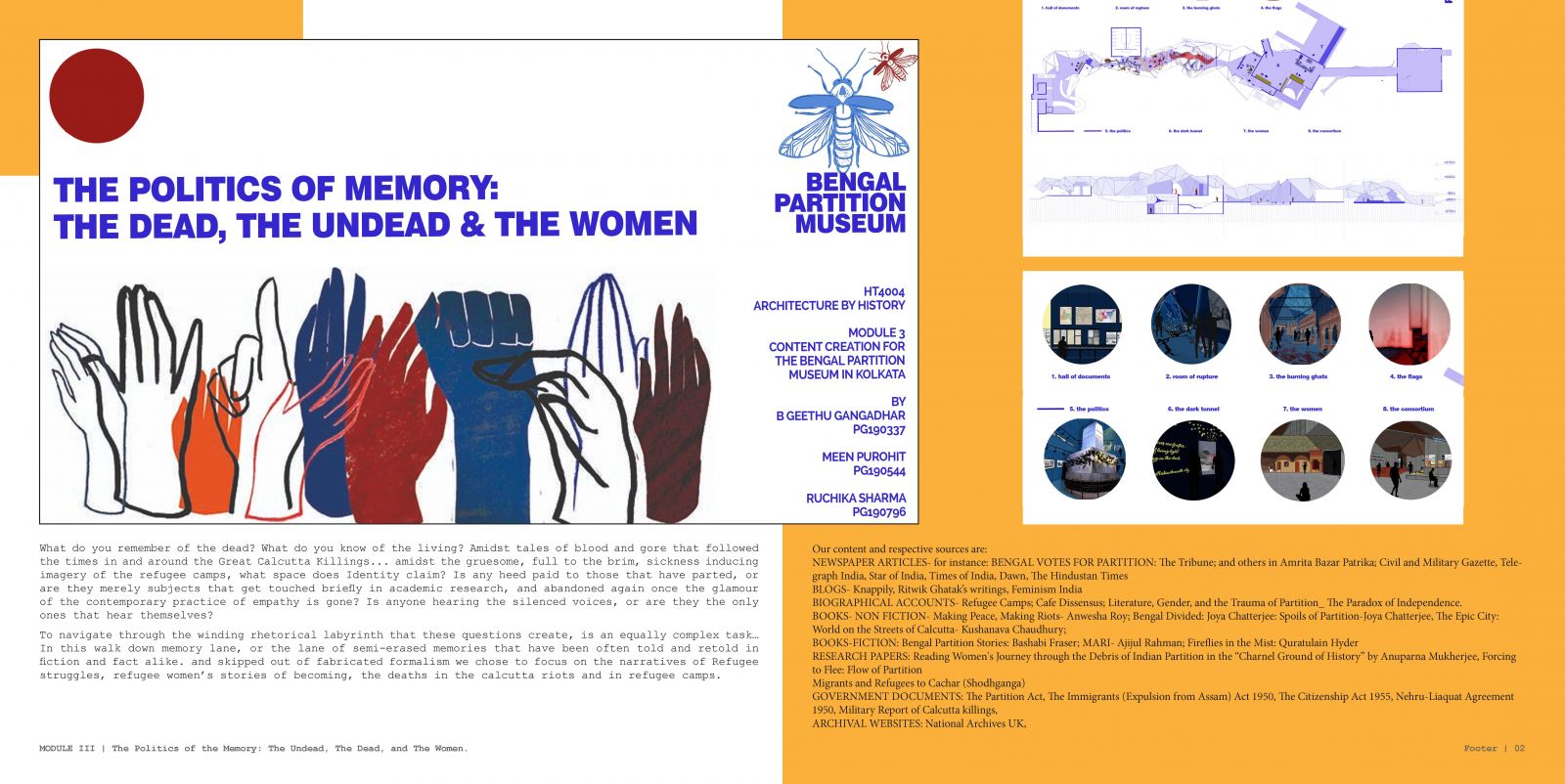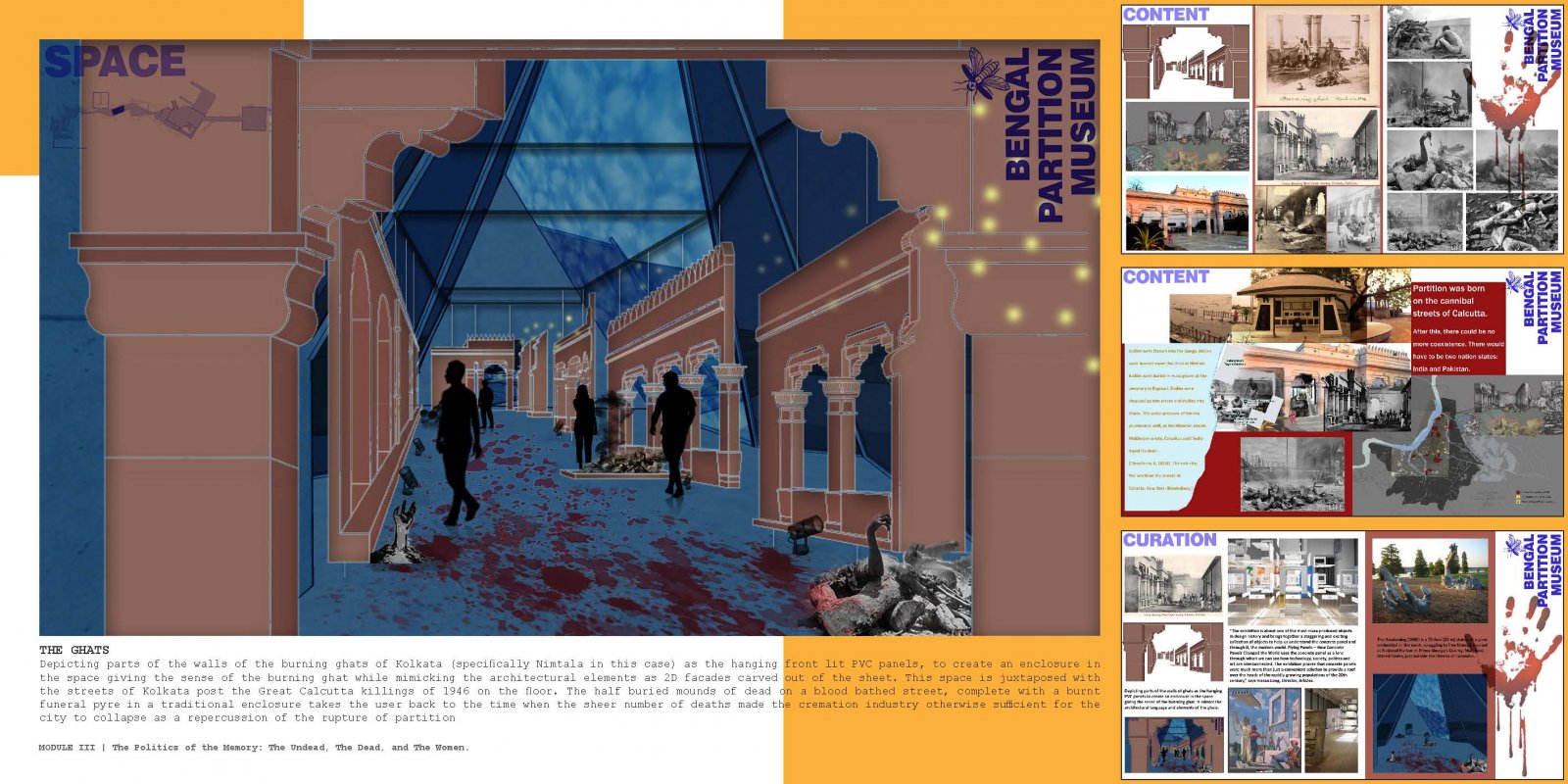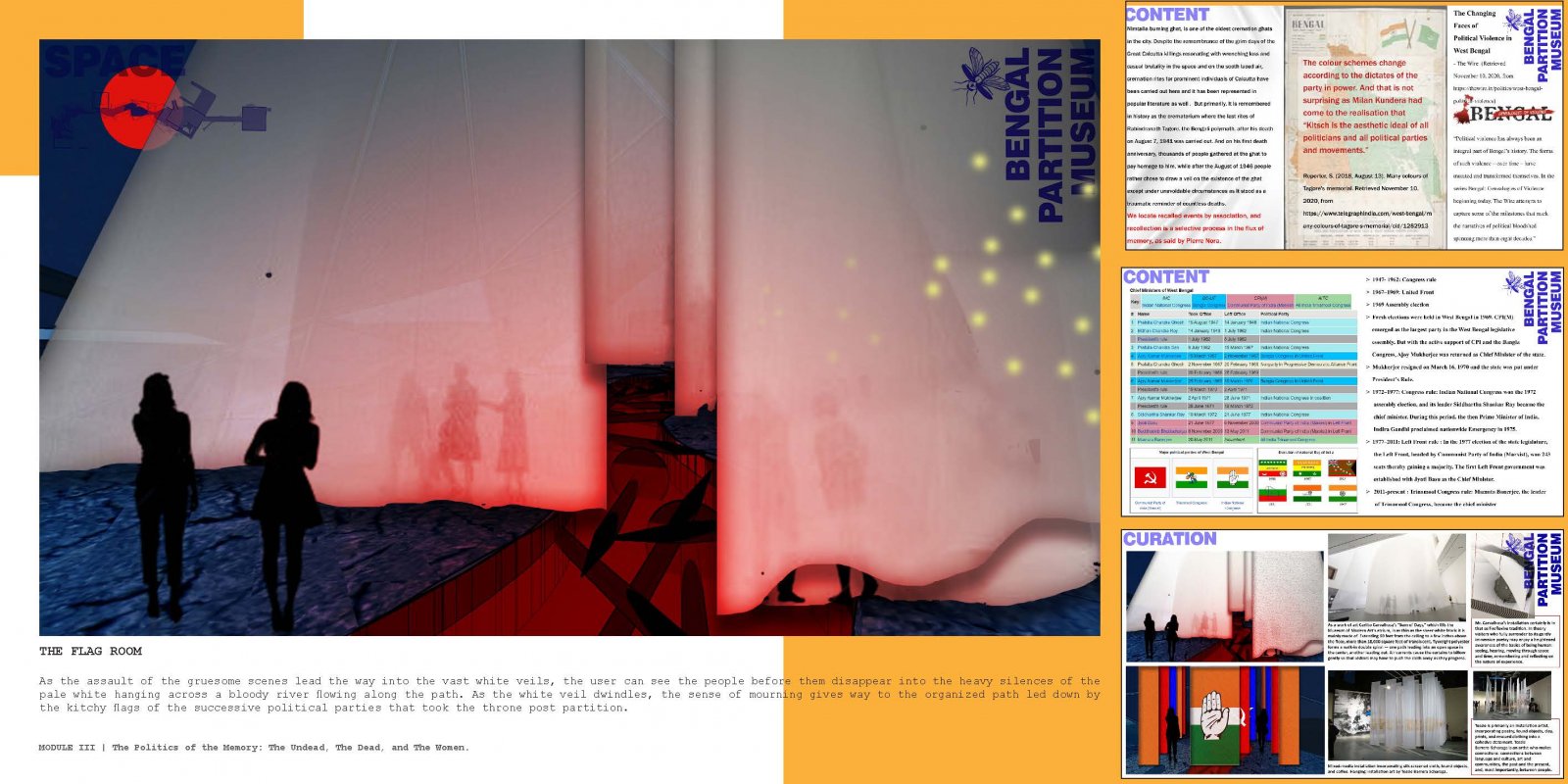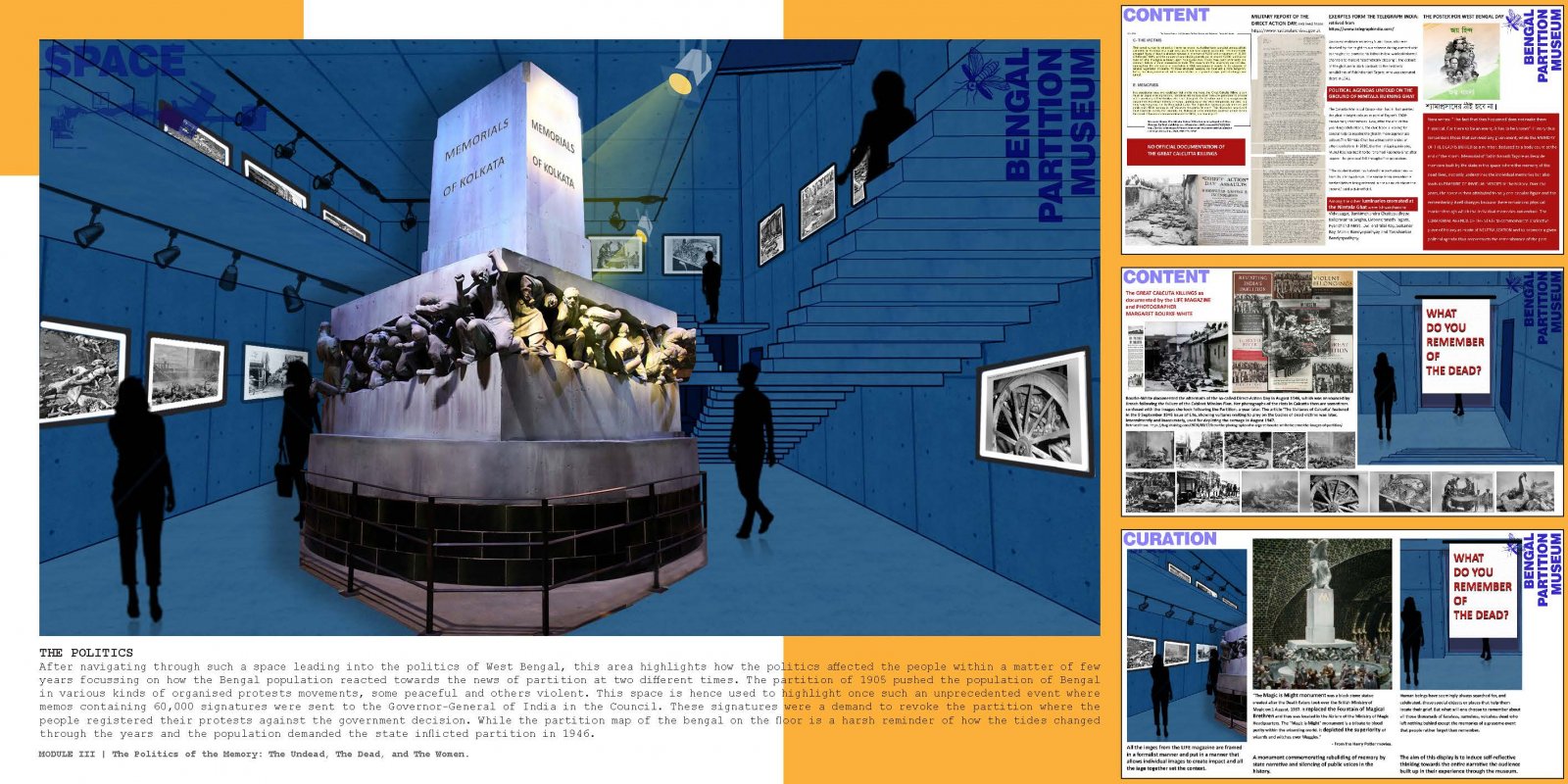Your browser is out-of-date!
For a richer surfing experience on our website, please update your browser. Update my browser now!
For a richer surfing experience on our website, please update your browser. Update my browser now!
The Studio, divided into three modules, navigates through different aspects and narratives of the city of Calcutta through the passage of time, particularly between its first and third partitions. My journey, and therefore my work, in all the three modules has been concentrated on unearthing the silenced voices under the weight of dominant narratives of formalist history and unpacking of the narratives through palimpsests of three forms – maps, images and museum spaces. The first module begins with palimpsestic mapping of Calcutta city to unpack the city as a site with multiple layers of historical interventions, using archival materials and terminated into the essay titled “Making memories, making memorials: the praxis of constructing memory histories that contribute to erasure of individual memories; case in point: the memorials on the burning Ghats of Calcutta”. The second module begin with unpacking the built typology of Calcutta in the early and mid-twentieth century through set design. My group and I designed the set as a streetscape in 2-D showcasing the various typologies in this fictional street that we set up. The 2-D nature of the street elevations, and the visibility and hiding thereof, along with the typical elements make way for us to comment on the identity assertion and simultaneous assimilation into the Indian landscapes by the Chinese. The last module of the studio focuses on content creation for the Bengal partition museum. In this module, my group curated a museum that voiced the narratives of Refugee struggles, refugee women’s stories of becoming, the deaths in the Calcutta riots and in refugee camps. The space we chose for the museum was a Partition museum titled 'FERNWEH' by Pavithra S Kalyani as a part of her studio project. The aim is to walk down memory lane, or the lane of semi-erased memories that have been often told and retold in fiction and fact alike.
